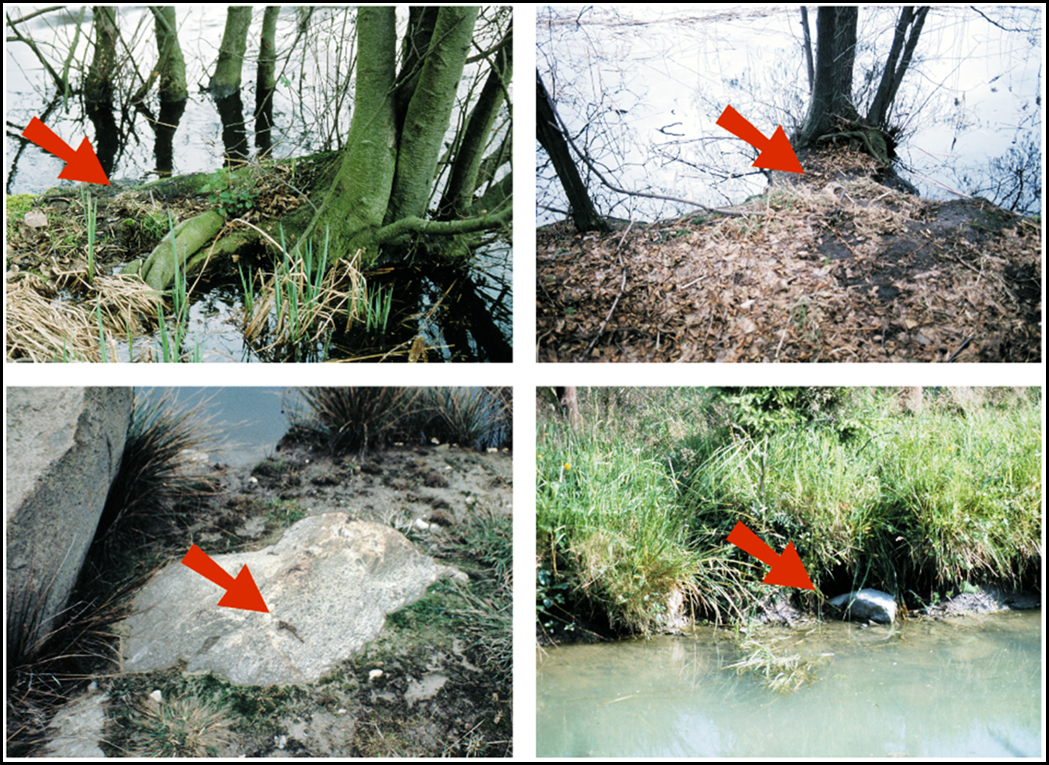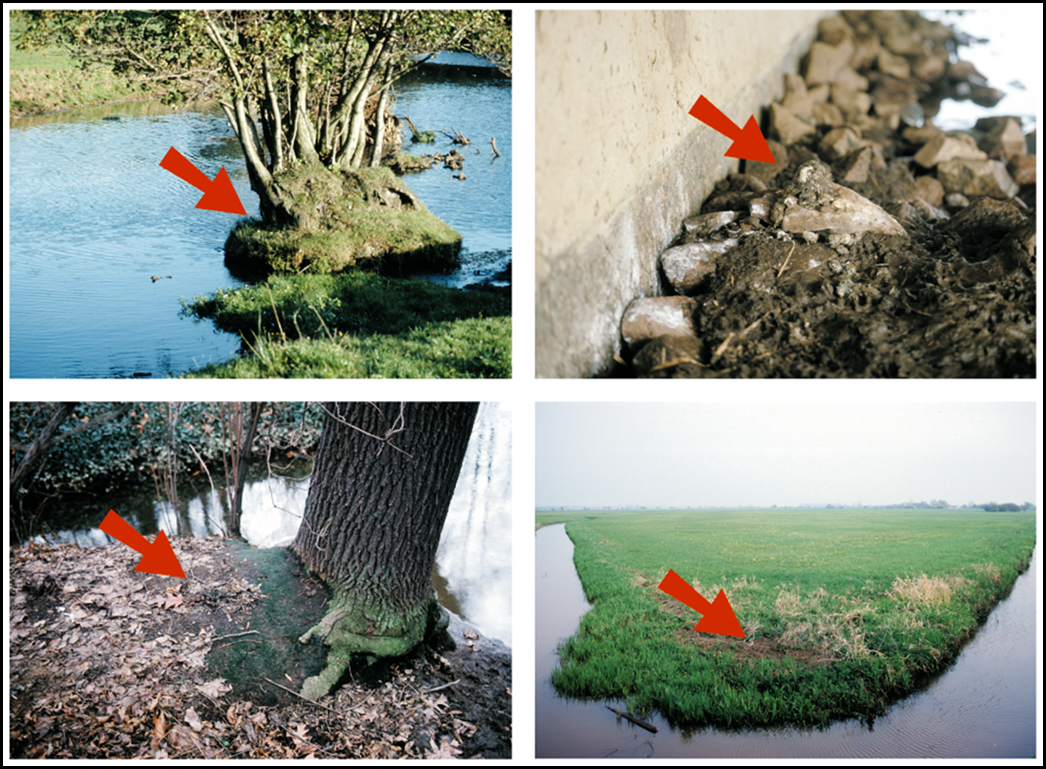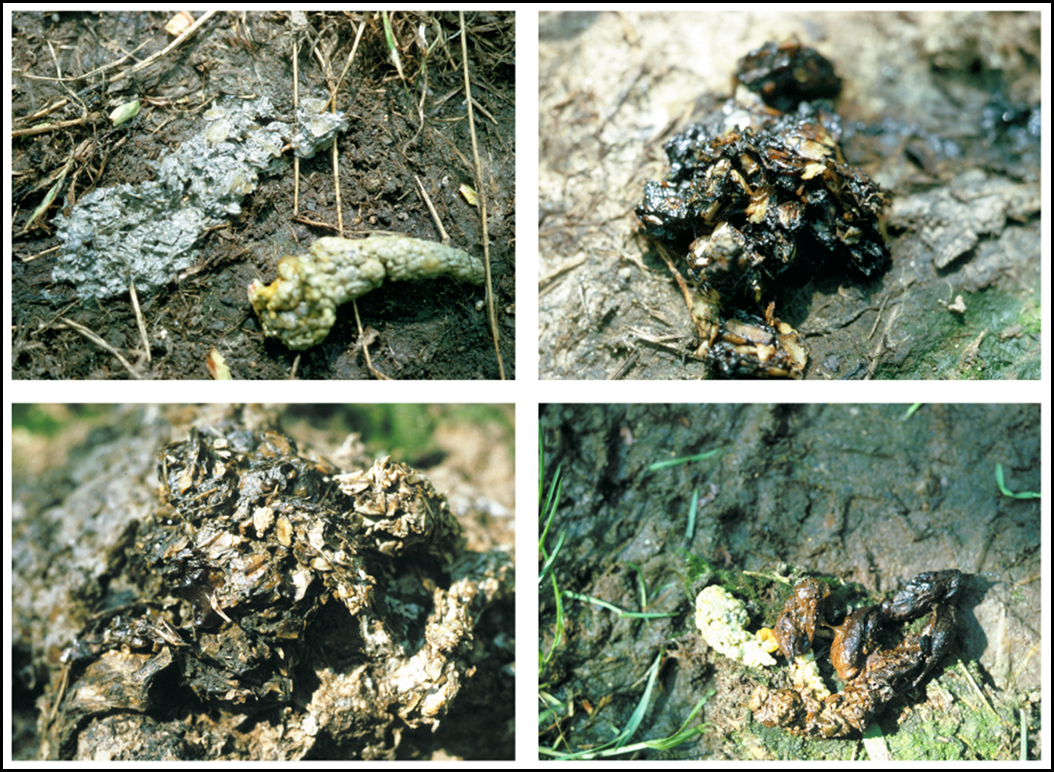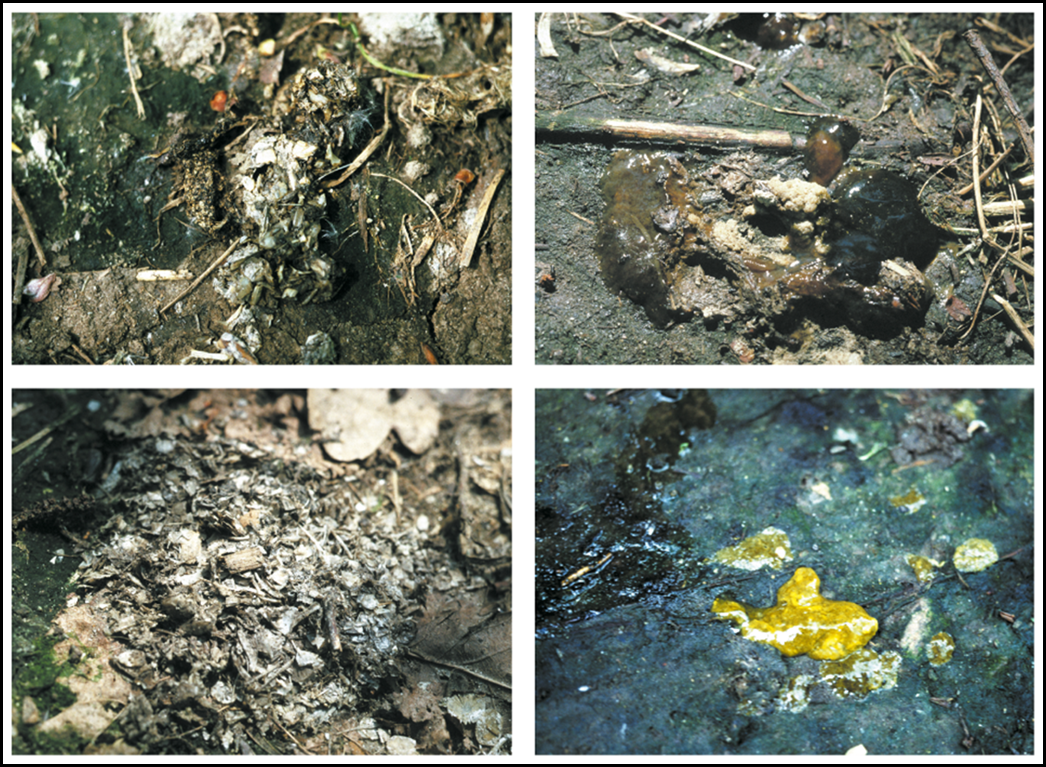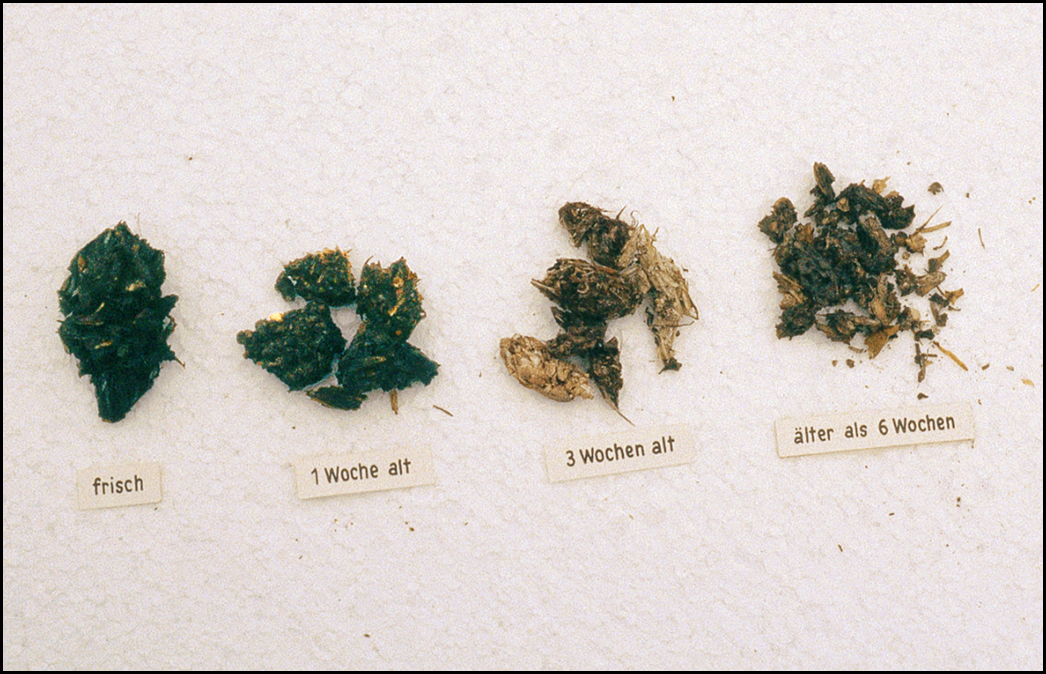| The otter marks its territory primarily in very noticeable places, most commonly along shorelines. Its faeces are most easily distinguished on concrete floors. |
|
| Otter latrines are, among other places, mostly located on small peninsulas, tree roots that jut out into the water or on stones. They are mostly found on small islands, roots, sandbanks, estuaries or, notably, under bridges. |
|
| The faeces shape can vary. Although it`s rarelyshaped like a sausage (as it is with other martens). |
|
| It is very common to find remnants of prey in otter feces (e.g. fish scales or bones) because it digests its food very fast. |
|
| Fresh faeces is mostly dark grey, but it can vary in color. |
|
| At times, it is riddled with yellow, greenish, brown or grey-whitish slime. |
|
| As time goes by, the feces turns grey and almost white until it de-composes. |
|







